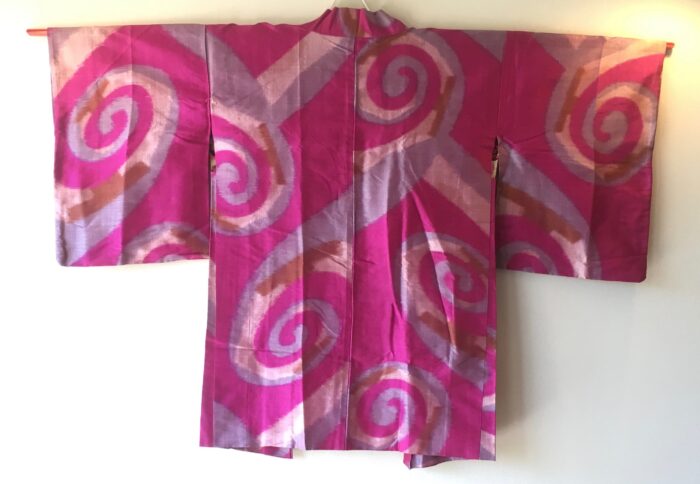During the “modern” period, women’s clothes changed from kimonos to western clothes. After the 1960s, kimonos were produced for formal luxury goods.
Meisen is Art Nouveau, when it is positioned in Japanese art history. Umberto Eco commented on “Storia della Belleza” (history of beauty). “Unlike Baroque, Art Nouveau is a naturally occurring exercise from the grassroots and is called by different names by the land. Jugentstill in Germany. In Austria, Gustav Klimt was the center and made an artist group called Sezession.” Eco said “ the beauty of narcissist” .The inner beauty is projected on an external object.Another commentator says newness or innovation was characteristic. Indeed, new beauty was expressed in “modern” Kimono.

In the 1910s, the work of producing silk from silkworms was one of the farmer’s side jobs. Quality raw silk are processed into export goods by spinning factories and raw materials of poor quality are made into raw silk manually by farmers. Second grade raw silk became raw materials for the casual Meisen.
In 1910, half of Japanese industrial workers were occupied by female workers engaged in the textile industry. Teenage girls who are mostly farmers. They lined up in company dormitories and the working hours were 12 to 14 hours a day.


